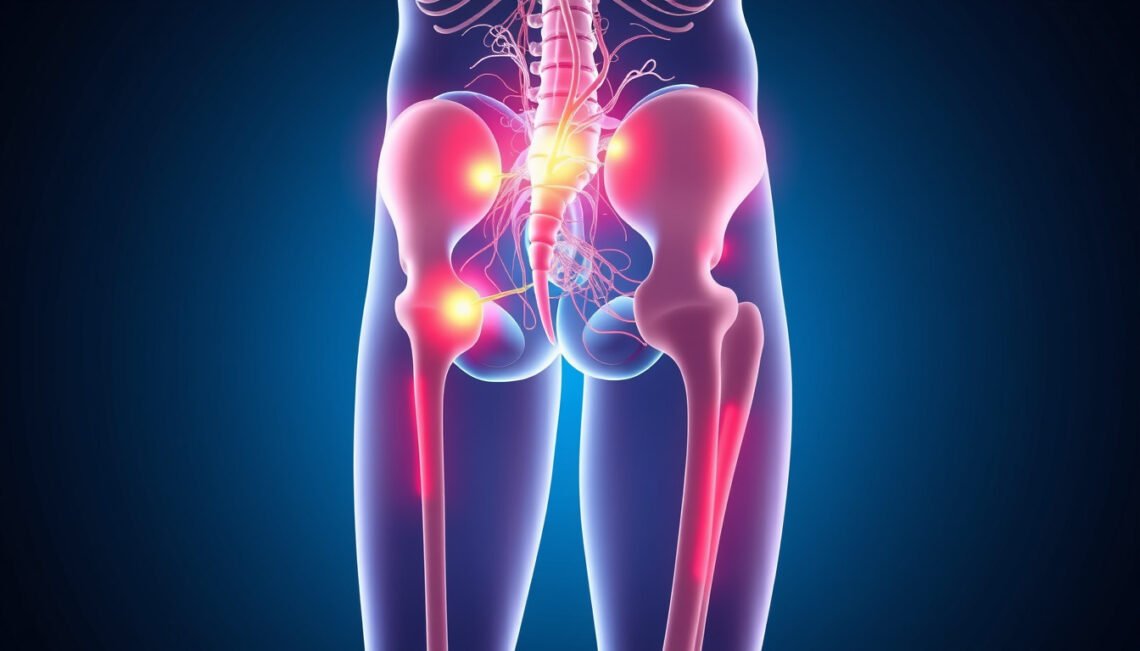Sciatic nerve compression is a common condition that can cause significant discomfort, pain, and mobility challenges for many individuals. Understanding what sciatic nerve compression is, its causes, symptoms, and available treatments is essential for managing this condition effectively. In this article, we’ll explore all these aspects in detail to help you recognize sciatic nerve compression and discover the best strategies to alleviate its effects.
What Is Sciatic Nerve Compression?
Sciatic nerve compression occurs when the sciatic nerve, which is the longest and widest nerve in the human body, becomes pinched or irritated. The nerve originates in the lower back, runs through the buttocks, and extends down the back of each leg. Compression of this nerve often results in pain, numbness, and weakness along its pathway, a condition commonly referred to as sciatica.
Causes of Sciatic Nerve Compression
Understanding the underlying causes of sciatic nerve compression is key to addressing the problem effectively. Here are the most common causes:
-
Herniated Disc: One of the most frequent causes is a herniated or slipped disc in the lumbar spine. When the disc protrudes, it can press on the sciatic nerve roots.
-
Spinal Stenosis: This is a narrowing of the spinal canal that puts pressure on the nerves, including the sciatic nerve.
-
Piriformis Syndrome: The piriformis muscle in the buttocks can spasm or tighten, compressing the sciatic nerve.
-
Degenerative Disc Disease: Age-related wear and tear on the spinal discs can lead to nerve compression.
-
Spondylolisthesis: This condition occurs when a vertebra slips forward over the one below it, potentially pinching the nerve.
-
Trauma or Injury: Accidents or direct injuries to the lower back or buttocks can cause swelling or misalignment that compresses the sciatic nerve.
-
Tumors or Infections: Though rare, tumors or infections near the spine can also cause nerve compression.
Recognizing the Symptoms of Sciatic Nerve Compression
Symptoms of sciatic nerve compression vary depending on the severity and location of the compression. Common signs include:
- Sharp, shooting pain starting in the lower back or buttocks and radiating down the back of the leg.
- Numbness or tingling sensations in the leg, foot, or toes.
- Muscle weakness in the affected leg.
- Burning or tingling feelings often worsened by prolonged sitting or standing.
- Difficulty standing up or walking due to pain or weakness.
- Pain that worsens with sudden movements like coughing or sneezing.
It’s important to note that symptoms usually affect only one side of the body.

Diagnosing Sciatic Nerve Compression
If you suspect sciatic nerve compression, consulting a healthcare professional is essential. Diagnosis typically involves:
- Physical Examination: Assessing reflexes, muscle strength, and sensory responses.
- Imaging Tests: MRI or CT scans to visualize the spine, discs, and nerves.
- Nerve Conduction Studies: To evaluate nerve function.
Early diagnosis helps prevent further nerve damage and ensures timely treatment.
Effective Treatments for Sciatic Nerve Compression
Treatment options for sciatic nerve compression depend on the cause, severity, and individual patient factors. Most cases improve with conservative care, while others may require more intensive interventions. Here are the primary treatment options:
1. Conservative Treatments
- Physical Therapy: Tailored exercises to improve flexibility, strengthen back muscles, and reduce nerve pressure.
- Medications: Anti-inflammatory drugs, muscle relaxants, or pain relievers can help manage symptoms.
- Heat and Cold Therapy: Applying ice packs and heat pads to reduce inflammation and relieve pain.
- Activity Modification: Avoiding activities that worsen symptoms and adopting proper posture.
- Epidural Steroid Injections: Delivered near the nerve to decrease inflammation and provide temporary relief.
2. Alternative Therapies
- Chiropractic Care: Spinal adjustments may help in some cases.
- Acupuncture: Can provide pain relief by stimulating nerve pathways.
- Massage Therapy: Helps relax tight muscles around the sciatic nerve.
3. Surgical Intervention
If symptoms persist beyond six weeks or worsen despite conservative treatments, surgery might be necessary. Common procedures include:
- Microdiscectomy: Removal of the herniated disc portion pressing on the nerve.
- Laminectomy: Removing part of the vertebra to relieve pressure.
- Spinal Fusion: Stabilizing the spine in cases of vertebral slippage.
Surgery generally offers significant relief but comes with inherent risks and recovery time.
Lifestyle Tips to Prevent Sciatic Nerve Compression
Incorporating healthy habits can reduce your risk of developing sciatic nerve issues or prevent recurrence:
- Maintain a healthy weight to reduce spinal stress.
- Practice good posture, especially during prolonged sitting or standing.
- Exercise regularly to keep back muscles strong and flexible.
- Use proper lifting techniques to avoid back injury.
- Avoid prolonged sitting; take breaks to move around.
Quick-Reference: Signs You Should See a Doctor Immediately
If you experience any of the following alongside sciatic nerve compression symptoms, seek emergency medical care:
- Sudden, severe weakness or numbness in the legs.
- Loss of bladder or bowel control.
- Severe, debilitating pain that doesn’t improve with rest.
FAQ Section
Q1: What causes sciatic nerve compression pain?
A1: Sciatic nerve compression pain is typically caused by conditions like herniated discs, spinal stenosis, or muscle spasms that directly press on or irritate the sciatic nerve, leading to inflammation and pain.
Q2: How long does sciatic nerve compression take to heal?
A2: The healing time varies widely; mild cases often improve within a few weeks with conservative treatments, while severe cases may require months or surgery for full recovery.
Q3: Can stretching exercises relieve sciatic nerve compression?
A3: Yes, specifically targeted stretching and strengthening exercises can relieve pressure on the sciatic nerve and reduce symptoms. However, they should be done under professional guidance to avoid worsening the condition.
Authoritative Source
According to the Mayo Clinic, sciatic nerve compression and the resulting sciatica often improve with self-care measures, but persistent symptoms require medical evaluation for appropriate treatment (source).
Conclusion: Taking Control of Sciatic Nerve Compression Today
Sciatic nerve compression can disrupt your daily life, causing pain and limiting movement. However, with timely diagnosis and the right treatment approach, most individuals achieve significant relief and return to normal activities. If you are experiencing symptoms of sciatic nerve compression, don’t wait for the pain to worsen. Seek professional advice, explore effective therapies, and adopt preventive lifestyle changes. Your path to a pain-free life starts with understanding your condition and taking proactive steps to manage it. Start today by consulting your healthcare provider and learning how to protect your spine for the long term.






